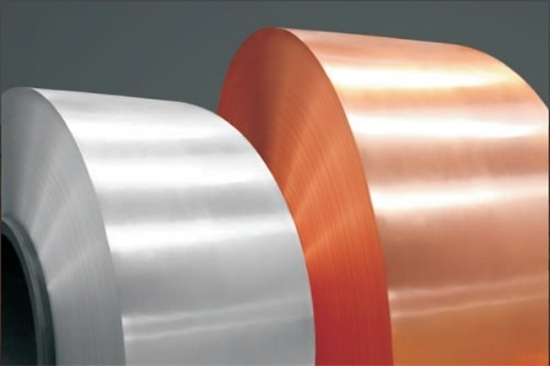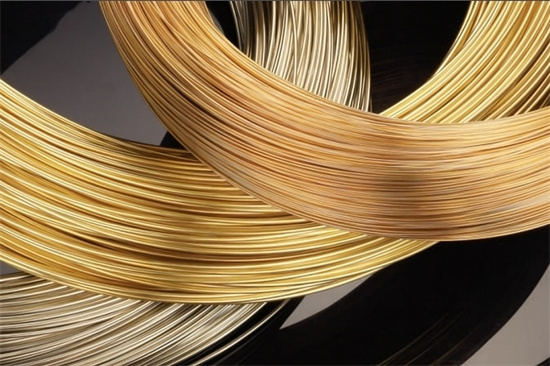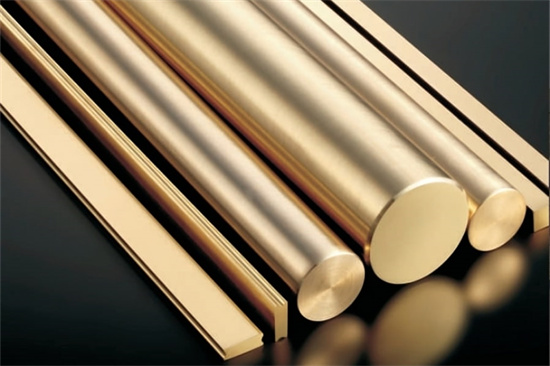


CuNi10Fe:この驚くべき合金のパワーを解き明かす
低いMOQ
さまざまなニーズに対応するため、最低注文数量を少なくしています。
OEM & ODM
顧客独自のニーズに応えるため、カスタマイズされた製品とデザインサービスを提供する。
十分な在庫
迅速な注文処理と、信頼できる効率的なサービスの提供。
顧客満足度
顧客満足を核とした高品質の製品を提供する。
この記事を共有する
目次
苛酷な環境、特に、以下のような環境下で使用される材料を選択することに関しては 腐食性条件, 高温そして 海水暴露しかし、これほど優れた素材はほとんどない。 CuNi10Fe.これは 銅ニッケル合金 鉄分が豊富である。 卓越した耐食性 そして 機械的性質.どのようなデザインであれ マリンアプリケーション, 石油・ガス産業あるいは 化学処理プラントCuNi10Feが最有力候補だ。
このガイドでは、CuNi10Feについて知っておく必要があるすべてのことを、CuNi10Feの特徴から、その製造方法まで深く掘り下げます。 構成 そして プロパティ その アプリケーション そして 仕様書.を探求する。 利点と限界 この合金は、次のような洞察を与えてくれる。 価格設定また、CuNi10Feに関する一般的な質問にもお答えします。
概要
CuNi10Fe は 銅ニッケル合金 約 10%ニッケル そして 1-2%鉄.を追加した。 アイアン は合金の 耐食性 海水や汽水が存在する環境での使用に適している。 マリンアプリケーション.塩分の多い環境ではすぐに腐食してしまう純銅とは異なり、CuNi10Feは塩分と塩分の両方の厳しい環境に耐えることができる。 マリン そして インダストリアル を暴露した。
主な特徴:
- 耐食性:での優れたパフォーマンス 海水, 汽水そして 酸性環境.
- 耐久性:高い 機械的強度 そして 耐疲労性.
- 熱安定性:両方で好調 ロー そして 高温.
- 作業性:グッド 成形性, 溶接性そして 加工性.
- 生物付着抵抗性:レジスト 海洋生物の成長 (フジツボ、藻類など)、海洋環境でのメンテナンスの必要性を減らす。
組成と特性
CuNi10Feのユニークな組成は、この素材に次のような特徴を与えている。 バランス・コンビネーション の 耐食性, 強さそして 熱安定性.合金の化学組成と主要特性について詳しく見てみよう。
構成
| エレメント | パーセント(%) |
|---|---|
| 銅(Cu) | 86 – 89 |
| ニッケル(Ni) | 9 – 11 |
| 鉄(Fe) | 1.5 – 2.5 |
| マンガン (Mn) | 0.5 – 1.0 |
| その他の要素 | 微量 |
機械的および物理的特性
| プロパティ | 価値 |
|---|---|
| 引張強度 | 360 - 450 MPa |
| 降伏強度 | 120 - 160 MPa |
| 伸び | 30 – 40% |
| 密度 | 8.94 g/cm³ |
| 熱伝導率 | 29 W/m-K |
| 電気抵抗率 | 0.25 µΩ-m |
| 融点 | 1100 - 1140°C |
| 耐食性 | 海水、酸に強い |
物件に関する重要な洞察
- 耐食性:について ニッケル そして アイアン 含有量はCuNi10Feの耐性を著しく向上させる。 腐食特に 海洋環境.
- 熱特性:この合金は、次のような特性を維持する。 安定性 幅広い温度範囲で使用できるため、次のような用途に最適です。 高温 工業プロセス 化学処理 または 発電.
- 機械的強度:CuNi10Feは、以下の良い組み合わせを提供する。 強さ そして 延性そのため、成形や加工が容易で、さまざまな産業用途に使用できる。
アプリケーション
CuNi10Feの 優れた耐食性, 耐久性そして バイオファウリング その特性から、次のような産業でよく使われる素材となっている。 海水 そして 腐食性環境 が普及している。過酷な条件下でも優れたパフォーマンスを発揮するその能力は、以下のような分野で人気の高い選択肢となっている。 海洋工学, 発電, 淡水化プラントなどなど。
一般的なアプリケーション
| 産業 | 代表的なアプリケーション |
|---|---|
| 海洋工学 | 配管システム、熱交換器、海水コンデンサー |
| 石油・ガス | オフショアプラットフォーム、ライザー、海底部品 |
| 発電 | 冷却システム、タービン部品、凝縮器 |
| 海水淡水化プラント | 蒸発器、ブラインヒーター、配管 |
| 造船 | プロペラ、船体付属品、海水取水システム |
| 化学処理 | 熱交換器、化学貯蔵、プロセス配管 |
CuNi10Feがこれらの用途に使用される理由
- 海洋工学:その 耐海水腐食性 はCuNi10Feに最適である。 海水配管システム そして 熱交換器.
- 石油・ガス:で 海洋掘削プラットフォームの過酷な組み合わせに耐える。 塩水, 高圧そして 温度変化.
- 海水淡水化:で 淡水化プラントCuNi10Feの耐熱性 塩水腐食 長い耐用年数を保証する。 維持費.
仕様、サイズ、規格
CuNi10Feは、さまざまな業界の特定のニーズを満たすために、さまざまな形状とサイズで製造されています。以下では、CuNi10Feに適用される一般的な仕様、サイズ、規格について概説します。
仕様と規格
| 仕様 | 詳細 |
|---|---|
| 一般的なフォーム | シート、プレート、ロッド、チューブ、パイプ |
| 直径範囲(ロッド) | 6 mm~250 mm |
| 厚さ範囲(シート) | 0.5 mm~30 mm |
| 長さ(バー) | 最大6メートル |
| 規格 | astm b111、astm b466、din 86019、en 12449 |
グレード
| グレード | 属性 |
|---|---|
| CuNi10Fe-ソフト | より良い 成形性に適している。 曲げ そして 溶接 |
| CuNi10Fe-ハード | 改善された 強さより良い 耐荷重 アプリケーション |
フォームとサイズ
- チューブ:よく使われる用途 海水冷却システム そして 熱交換器 で マリン そして 産業用途.
- プレート:一般的な用途 オフショアプラットフォーム そして 造船 にとって 構造部品.
- ロッド:でよく使われる。 精密加工特に 石油・ガス セクター
サプライヤーと価格
CuNi10Feの価格は、以下を含むいくつかの要因によって変動する可能性がある。 フォーム (チューブ、プレート、ロッドなど)。 サプライヤー所在地そして 市況 (原料銅やニッケルのコストなど)。以下では、一般的な サプライヤー そして 価格情報 CuNi10Feの場合。
サプライヤーと価格情報
| サプライヤー | 所在地 | 価格帯(kgあたり) | 一般的なリードタイム |
|---|---|---|---|
| 金属スーパーマーケット | アメリカ | $15 – $30 | 2~4週間 |
| 上海金属 | 中国 | $12 – $28 | 3~5週間 |
| 金属4U | 英国 | £12 – £25 | 1~3週間 |
| ユーロアロイ | ヨーロッパ | €14 – €30 | 4~6週間 |
CuNi10Feの価格に影響を与える要因
- 形状:チューブやプレートはロッドよりも高価になる傾向がある。 処理の複雑さ.
- グレード:より硬いグレードは、一般的に価格が若干高くなる。 追加治療 より高い目標を達成するために必要なこと 強度特性.
- 市場価格:の価格 ニッケル そして 銅 は変動する可能性があり、CuNi10Fe のコストに影響する。
利点と限界
他の素材と同様、CuNi10Feにも独自の特性がある。 利点 そして 制限.以下では、この高性能合金の主な利点と欠点を探る。
利点と限界
| メリット | 制限事項 |
|---|---|
| 例外的 耐食性 | より高価 標準的な銅や真鍮の合金よりも |
| 高い 機械的強度 | 電気伝導率の低下 純銅に比べて |
| グッド 溶接性 そして 成形性 | より重い いくつかの代替素材よりも |
| 素晴らしい 耐生物付着性 | ニッケル含有量 コストと アレルギー反応 アプリケーションによっては |
| での長寿命 マリン 環境 | を必要とする用途には適さない。 高導電性 |
利点と欠点についての洞察
- 耐食性:CuNi10Fe は、この用途に最適な素材である。 海洋環境ここで 耐海水性 が不可欠である。しかし、この合金は より高い のような単純な銅合金よりも優れている。 ブラス または ブロンズこれは、次のような場合に考慮される。 コスト が大きな要因だ。
- 機械的特性:その組み合わせ 強さ, 延性そして 成形性 に適している。 ヘビーデューティー・アプリケーション ような オフショアプラットフォーム.しかし、その ヘビー級 のような他の素材と比較すると アルミニウム のような用途には適さないかもしれない。 ライト級 特性は不可欠である。
CuNi10Feと他の銅合金との比較
合金を選択するとき、あなたはどのように疑問に思うかもしれない。 CuNi10Fe 他の銅ニッケルや銅合金と比較して 銅基合金.それでは、CuNi10Feと一般的な代替品との比較をしてみよう。 銅ニッケル30, CuNi70/30そして CuZn39Pb3(黄銅).
CuNi10Feと他の銅合金との比較
| プロパティ | CuNi10Fe | CuNi30 (70/30) | CuZn39Pb3(黄銅) | CuNi90/10 |
|---|---|---|---|---|
| 引張強度 | 360 - 450 MPa | 490 - 680 MPa | 300 - 450 MPa | 350 - 400 MPa |
| 降伏強度 | 120 - 160 MPa | 150 - 200 MPa | 150 - 300 MPa | 130 - 180 MPa |
| 耐食性 | 素晴らしい | 優れている(特に海水において) | 中程度 | 非常に良い |
| 加工性 | グッド | 中程度 | 非常に良い | グッド |
| 電気伝導率 | 10-30% iacs | 5-15% IACS | 28-35% iacs | 10-20% iacs |
比較から得られる主なもの
- CuNi10Fe vs CuNi30:CuNi30は 機械的強度の向上 そして 耐食性 で 極限の海洋環境 が、CuNi10Fe よりも高価で加工が難しい。
- CuNi10Fe vs 黄銅 (CuZn39Pb3): 真鍮 オファー 加工性の向上 通常は 安いしかし 耐食性 はCuNi10Fe よりも著しく低い。
- CuNi10Fe vs CuNi90/10:どちらの合金も 類似物件しかし、CuNi10Feの方が一般的である。 費用対効果 の方が若干良い。 作業性.
よくある質問(FAQ)
CuNi10Feについての理解を深めていただくために、よくあるご質問をまとめました。
| 質問 | 答え |
|---|---|
| 何に使うのですか? | 主に次のような場面で使用される。 海洋工学, 石油・ガス, 造船そして 化学処理 そのため 耐食性 そして 耐久性. |
| 海水で腐食しますか? | いいえ。 優れた耐食性 で 海水に最適である。 マリンアプリケーション. |
| 加工は簡単ですか? | そうだ。 良好な加工性特に 軟級に適している。 精密部品. |
| 値段はいくらですか? | 価格は通常、以下の間である。 kgあたり$12および$30サプライヤーや形状(シート、チューブ、ロッドなど)による。 |
| 溶接は可能ですか? | そう、それは素晴らしいものだ。 溶接性特に 海洋および産業用途. |
| その主な特性は? | その名は 耐食性, 機械的強度, 熱安定性そして 耐生物付着性. |
結論
それは は 万能銅ニッケル合金 を得意とする。 マリン, インダストリアルそして 化学処理 の用途に使用される。その 耐食性 そして 機械的強度 にとって最高の選択肢となる。 海水システム一方 熱安定性 で優れたパフォーマンスを発揮する。 高温環境.よりシンプルな銅合金に比べればコストは高いかもしれないが、その価値は大きい。 長寿命 そして 卓越したパフォーマンス 過酷な条件下でも、投資する価値がある。
どのようなデザインであれ オフショアプラットフォーム, 船舶部品あるいは 熱交換器を提供する。 耐久性 そして 信頼性 が必要です。その特性、用途、制限を理解することで、次のプロジェクトに適した素材かどうか、十分な情報を得た上で判断することができます。
最新価格
Met3DPについて
製品カテゴリー
ホットセール

3Dプリンティングと積層造形用金属粉末








